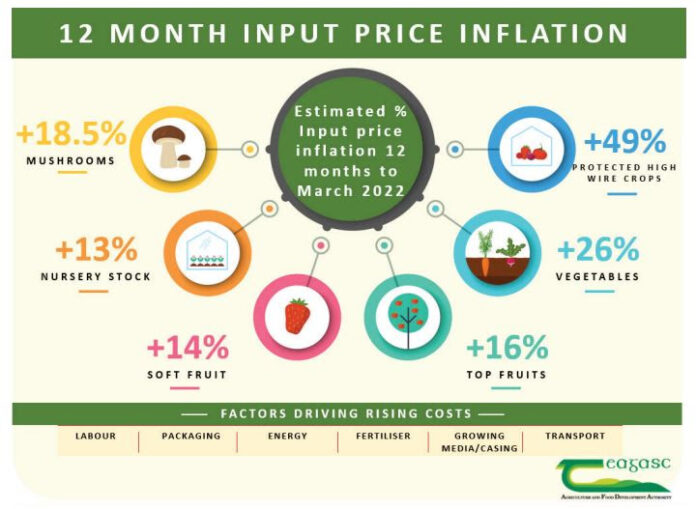Teagasc have just circulated the Horticulture Crop Input Price Inflation which is an update from the document that was published in late October 2021. This document aims to represent the increase in input costs for the horticultural sector after a second wave of inflation due to the impact of the war in Ukraine.
While there are some positive soundings on price increases from retailers and a support scheme announced last week by DAFM, it will be important that increases are negotiated with retailers where warranted. You may find this document useful in preparation for any discussions you may be having in regard to negotiation on price with your buyers.
Increasing cost dominate business conversations these days. There are no areas safe from price increases at present and slow supply chains make for a more difficult time to manage. Teagasc will continue to monitor the volatility in horticulture input prices. The cost of energy is likely to top the bill for anyone with heated, protected crops followed closely by fertiliser/growing media inputs. The majority of growers I have spoken within the last few months have purchased a lot of stock in advance with the hope of beating the supply chain challenge. Materials that cant be stored such as young plants and big volumes of growing media are being hit with price increases and surcharges on delivery costs. Its worth noting that Brexit continues to impact costs – P&O ferries loss also impacted shipping times. Cost of exporting plants to GB are likely to increase further as from July 1st Border Control Posts are due to take over plant and document inspections.
With few options, growers are limiting the duration of use of heated glass. Decisions on growing poinsettias will be reviewed almost daily until they are planted and on the benches. It looks certain there will a decline in production area in the coming year unless there is a dramatic change in energy costs or plant prices.
Looking at some research trials in Netherlands on fossil fuel-free bedding plant production it has been possible to grow bedding crops all year round without drastically reduced additional heat using solar gain, thermal screens and buffer tanks. The average heat use was reduced from 21.5 m3/m2/year to 0.82 m3/m2.
While investing in costly infrastructure takes time to develop, this may be the year to work harder than ever to limit waste, growing fewer speculative crops at the end of the bedding season.




